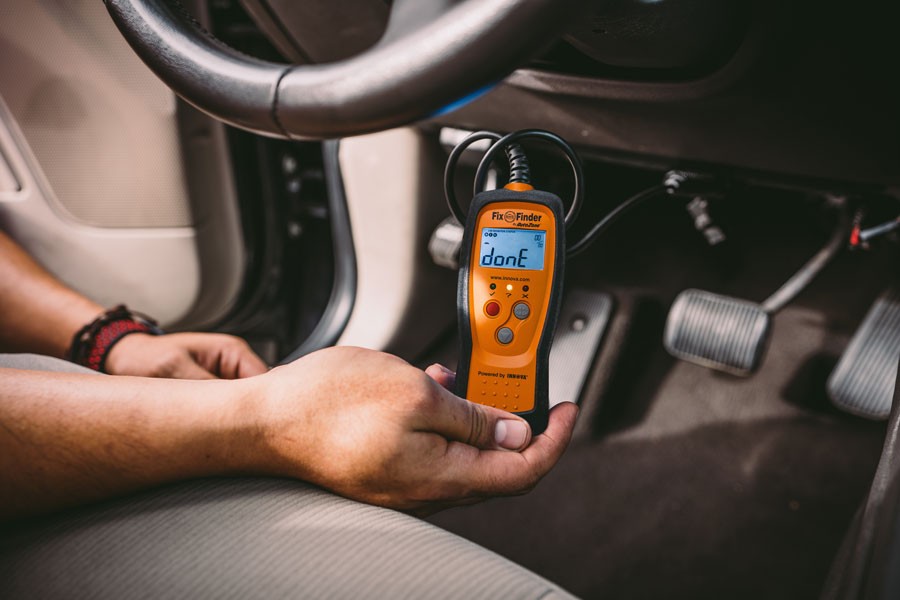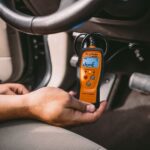Connecting a car scanner, also known as an OBD2 scanner or code reader, is the first step in diagnosing car problems. This guide provides a comprehensive walkthrough on how to plug in a car scanner correctly and understand the basics of using it.
Locating the OBD2 Port
The OBD2 port is a 16-pin trapezoidal connector typically located under the driver’s side of the dashboard. It’s usually within reach of the steering wheel. In some cases, it might be hidden in the center console, under the passenger side of the dash, or even behind a panel.
Connecting the Car Scanner
- Turn Off the Ignition: Before connecting anything, ensure your car’s ignition is completely off to prevent any electrical issues.
- Connect the Scanner: Align the male end of the scanner’s connector with the female OBD2 port. The trapezoidal shape ensures it only fits one way. Push firmly until it clicks into place. A slight wiggle might be needed.
- Turn the Ignition On: Turn the ignition key to the “On” position. Don’t start the engine. This powers up the OBD2 port and the scanner. In some vehicles, you may need to turn the key to the “Accessory” position instead of “On”.
- Wait for Initialization: The scanner will boot up and initialize. This might take a few seconds. Follow any on-screen prompts, such as entering the vehicle’s VIN or engine size. Some scanners might require you to start the engine for certain tests.
Using the Car Scanner Menu
Once the scanner is ready, you’ll see a menu on the screen. Common options include:
- Read Codes: This displays Diagnostic Trouble Codes (DTCs) indicating potential problems. Each code is a combination of a letter and four numbers (e.g., P0301).
- Erase Codes: This clears the stored DTCs after repairs are made.
- Live Data: This shows real-time sensor readings, allowing you to monitor various parameters.
- Freeze Frame: This captures vehicle data at the moment a DTC was set.
- Vehicle Info: This displays information about the vehicle’s make, model, and year.
- I/M Readiness: This indicates if the vehicle is ready for emissions testing.
Understanding Diagnostic Trouble Codes (DTCs)
DTCs follow a specific format: a letter followed by four numbers.
-
The letter signifies the system:
- P: Powertrain (engine, transmission, emissions)
- B: Body (airbags, interior systems)
- C: Chassis (suspension, steering)
- U: Network communication
-
The first number is:
- 0: Generic code (applicable to most manufacturers)
- 1: Manufacturer-specific code
-
The remaining numbers pinpoint the specific system and fault. For example, P0301 indicates a misfire in cylinder 1. Resources are available online and in repair manuals to decipher DTC meanings.
Saving Money with a Car Scanner
A car scanner can save you money by:
- Early Diagnosis: Identifying potential problems early can prevent more costly repairs down the road.
- DIY Repairs: For simple issues, you might be able to fix the problem yourself after diagnosing it with a scanner.
- Smog Check Readiness: Checking I/M Readiness ensures your vehicle is likely to pass emissions tests.
Conclusion
Knowing how to plug in and use a car scanner empowers you to take control of your vehicle’s maintenance. By understanding DTCs and utilizing the scanner’s features, you can save money on repairs and keep your car running smoothly. Remember to consult a qualified mechanic for complex issues or if you’re unsure about performing repairs yourself.


